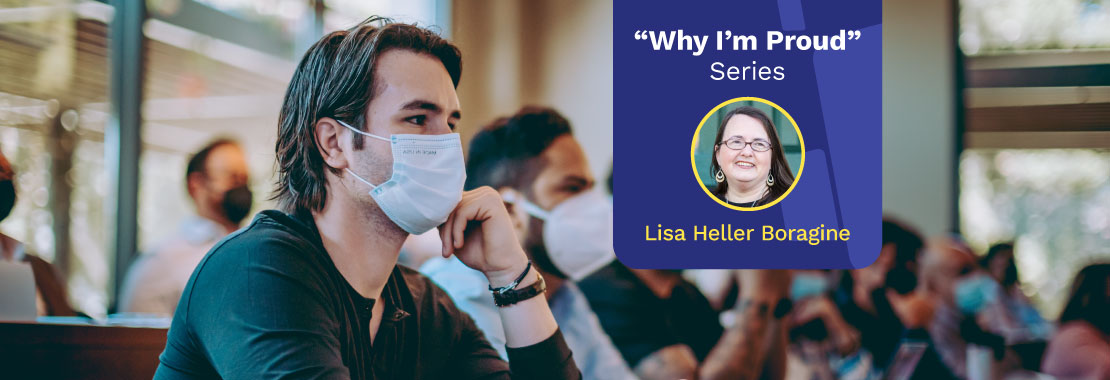Lisa Heller Boragine is a Tenured Associate Professor of Communication and the Chair of the Department of Arts & Communication at Cape Cod Community College
Teaching is a privilege. I love the connections that I make with students both in and out of the classroom. Throw together a mix of engagement, fun, learning and curiosity and my passion for teaching really ignites when I see that alchemy in action, creating new opportunities and experiences for students. Anyone who has taught for a while can tell you it’s magic when a class comes alive.
The COVID-19 pandemic threw a wet blanket all over that magic. Previously crafted lessons known to produce brilliant embers just produced a smoldering grey smoke. I saw a lot of passive Zoom faces staring back at me — or worse, students had video and sound off. Were they even there? Hard to tell. All I know is that the magical equation was no longer working. It was time to create something new to engage my students.
I adapted because I had to. But I’ve learned quite a bit over the past two years of teaching primarily over Zoom, and I’m proud of the things I have learned about myself. Here are the three things that I’m most proud of.
I didn’t lose my love of teaching
There have been a lot of reports of the pandemic inspiring the Great Resignation in higher education, all the way through faculty holding coveted tenure-track jobs. The Chronicle of Higher Education and Fidelity Investments produced a 2020 study that found more than half of all faculty were thinking about leaving the profession.
I am proud to share that I am still in love with teaching. Yes, the pandemic created new challenges. But, my passion for teaching students is still alive and well, if not stronger because I’m a sucker for a good challenge.
I kept most of my students from dropping out
Student retention rates are low. Data from the National Student Clearinghouse Research Center reports that colleges have lost almost 1.3 million students since the start of the pandemic. That’s almost 10% of the undergraduate student population!
Any student we can keep enrolled is a win, and I’m happy to share I’ve actually gotten better at retaining and engaging students in my classes than I was before the pandemic. Among other things, I’ve been more proactive about reaching out to students who have missed a lot of class, and much better about reminding students about upcoming assignments. I spend at least 10 minutes at the beginning of each class talking about what’s coming up in the next week.
My students had fun
Early in the pandemic, I realized that the old modalities weren’t going to work anymore. I cut lecture length in half, no more than 10-to-15-minute bite-size intervals. I found tools that kept students engaged and that worked in a remote environment. I started every Zoom class with five minutes of music over YouTube, and asked students to provide song suggestions. I used interactive quizzing tools like Aha-Slides and software tools like Padlet to keep students accountable and engaged during breakout sessions. I tried playing remote games.
I also implemented rules that students had to keep their screens on for most of the class. But, to keep things fun, encouraged students to play with the video filters and backgrounds during a portion of the class. And most of all, I made sure to ask students how they were doing and encouraged them to share with the class if they were comfortable doing so.
Final Thoughts
A good classroom experience has often been described as a three-legged stool, with equal connections between student to faculty, student to student and student to material. In a traditional face-to-face classroom, this is easy to do. Students see each other, you can have small groups work together, and you can observe the sessions without much effort to see who isn’t engaged and what’s not working. Students who are confused can stay after class to talk.
In a remote classroom, none of that works. It’s hard to observe students. There is no opportunity to talk in person “after class.” It’s a completely different learning experience that requires a shift in pedagogy. It’s a challenge, but it can be a fun one if you let it be.
We often think about our failures. But thinking about our successes can be a powerful way to keep motivated. It reminds us why we got into education in the first place. When we share our success stories with other educators, it can foster a spirit of collaboration and keeps us excited for what’s next.
Read the rest of the posts in the “Why I’m Proud” series to see what other faculty members are most proud of after teaching through a pandemic.

